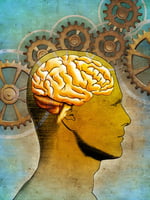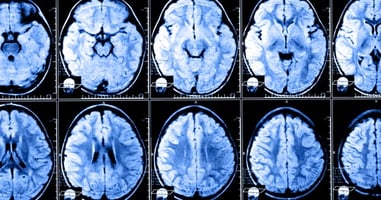Neurofeedback Using fMRI Found to Decrease MDD Symptoms, Study Shows
 |
In a report appearing today in AJP in Advance, Kymberly Young, Ph.D., of the University of Pittsburgh and colleagues wrote that in addition to offering a novel clinical intervention for depression, the findings support the role of blunted amygdala hemodynamic reactivity to positive stimuli in depressed patients.
“This neurofeedback intervention targets a specific fundamental mechanism identified by neuroimaging research (blunted amygdala activity during positive memory recall), it appears safe and well tolerated, and it gives patients a sense of control over their treatment and symptom improvement,” according to Young and colleagues.
In the study, 36 patients with MDD were randomly assigned to receive rtfMRI of one of two regions in the brain—the left amygdala (the intervention group; n=19), which is associated with emotion regulation and memory retrieval; and the intraparietal sulcus (the control group; n=17), which is not associated with emotion regulation or memory retrieval. While attempting to mentally retrieve positive autobiographical memories, the subjects were fed back an image representing the level of hemodynamic activation in the target area.
The primary outcome measure was change in score on the Montgomery-Åsberg Depression Rating Scale (MADRS).
Twelve participants in the experimental group responded to neurofeedback, defined as at least a 50 percent decrease in MADRS score, compared with two participants in the control group. Six participants in the experimental group and one in the control group met criteria for remission at study end (MADRS score <10). Moreover, statistical analysis showed that MADRS scores were significantly associated with hemodynamic activation in the amygdala among patients receiving the intervention.
“This novel intervention therefore merits further testing as a potential treatment for depression, and it can serve as a model for novel neuroscience-based interventions,” the researchers concluded.
For related information, see the Psychiatric News article "New Uses of Brain Imaging Get Closer to Clinic."
(Image: Ultima Gaina/istock.com)





